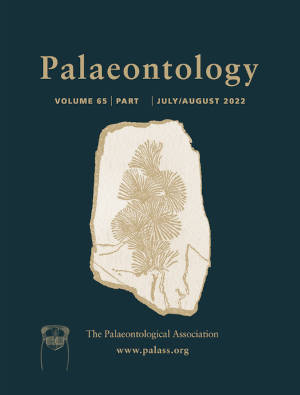Article: The utility of probability plotting in palaeobiology
Publication: Palaeontology
Volume:
65
Part:
6
Publication Date:
2022
Article number:
e12633
Author(s):
Larry F. Rinehart, Andrew B. Heckert, and Spencer G. Lucas
Abstract
Abstract We introduce probability plotting for general use in the analysis of biological and palaeontological morphometric data. When applied to morphometric data, this analytical tool can yield palaeoecological, ontogenetic and demographic information. We have adapted and expanded a statistical tool used in reliability engineering, mechanical or electrical lifetime analysis, geochemistry and ore mineral analysis to analyse fossil populations. The technique is explained stepwise in a ‘user's manual’ format. Its power is to characterize statistical distribution types, to determine whether these distributions are skewed or truncated, and to resolve and quantify the components of mixed distributions, which in palaeontological data potentially represent morphological groupings such as cohorts or sexual dimorphs. The ease of application and simplicity are surprising. A probability plot of growth series data (e.g. skull lengths, femoral lengths, snout-to-vent lengths or other morphometrics) typically shows complex non-normal distribution of the data because of multimodal composition. We show that these component modes, which are generally, but not always normal (i.e. Gaussian), can be resolved, and that they correspond to yearly age groups (cohorts), sexual dimorphs, pre- and post-metamorphic forms, other ontogenetic stages or possibly mixed taxa. When these component size distributions are associated with an age group or sex, several important palaeoecological calculations become possible. These include growth curves, age and sex distributions, sexual dimorphism indices, etc. We demonstrate the biological and palaeontological utility of probability plots with several examples including a Permian wingless insect, an extant unionid bivalve, a Triassic metoposaurid amphibian, an extant lizard, and a Triassic theropod dinosaur.
